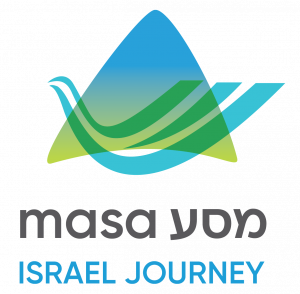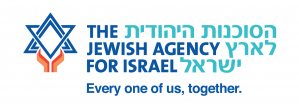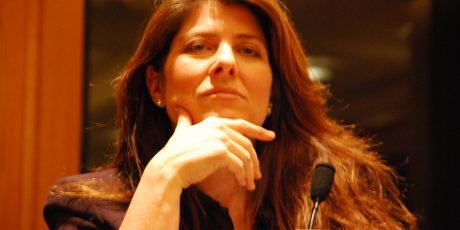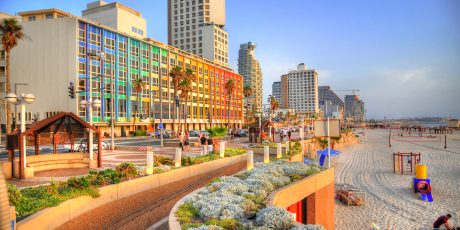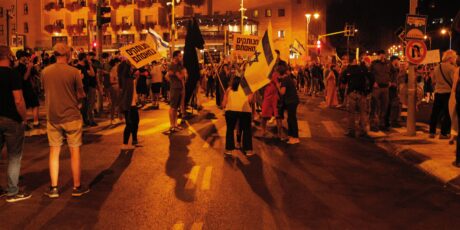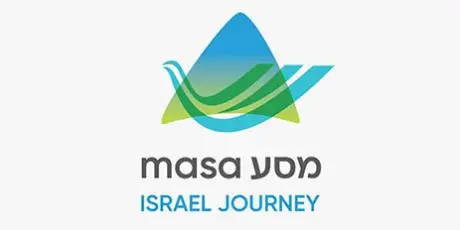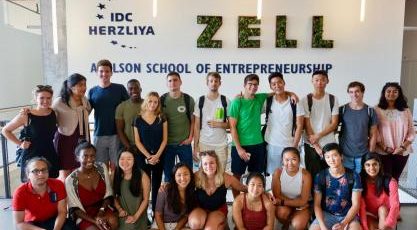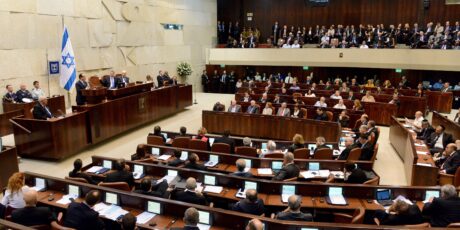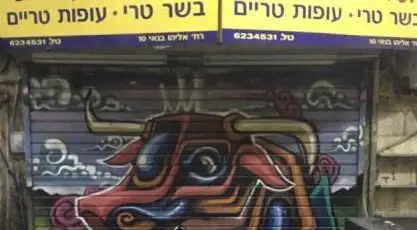by Shachar May
“Liminal” is a favorite word of mine. Coming from the Latin “limen,” meaning “threshold”, the word originated to describe a person’s state while they are in the midst of a transformative ritual – the in-between state where they are neither here nor there. These days, it’s an esoteric term used in anthropology and gender studies to describe people who are “betwixt and between” – people who have fallen through the cracks of society and are neither insiders nor outsiders.
As a half-Israeli, half-American, the best word I have for my identity is “liminal”. Growing up, we visited my mother’s family in Israel every year. I half understood the language. I was half-familiar with the culture. Coming to Shabbat dinner with my entire extended family feels half like a tourist visit and half like a homecoming. In the States, I introduced myself with my last name, “May”, for almost 5 years to avoid explaining the pronunciation of my first name. In the social-justice oriented circles I lived and worked in, pro-Israeli stances were unpopular. I resented the time I had spent in Jewish day school because I felt that I had only received biased information. I saw that my upbringing was secluded and lacked diversity.
I often fielded questions about Israeli conflict and culture from non-Jewish friends, and my answers were always ambivalent. I lived with a dual identity in a double-reality. I didn’t know how I felt. I knew that being Israeli was incredibly important to me, but the more I read about the political realities the less I agreed with my country’s actions.
But here’s the thing: it was still and always “my” country.
So I signed up for the social justice track of Tikkun Olam in Tel Aviv-Jaffa, a volunteer in Israel and intern in Israel program based in South Tel Aviv and Jaffa. I picked the program because it seemed to be the least one-sided. Unlike many other programs bringing young people to Israel, there seemed to be no attempt to conceal any of the harsher realities of the complex socio-political situation. I had seen the refugees in South Tel Aviv; I had heard about the economic injustice in East Jerusalem; I knew Israel was not a united front but a plurality of different views on what a “Jewish State” is and should be. I wanted to form my own opinions firsthand. Coming to Israel I was determined to see the good and the bad and I have seen plenty of both. The longer I stay the more blurred the line becomes.

Here’s a moment that captured the blur for me.
On March 8th we took a group trip with the program to visit Jerusalem. The tour guide took us to several outposts along the green line and explained the history of East and West Jerusalem. We followed along on historical maps, crisscrossed with green and red and blue lines marking the different historical borders of Israel, the West Bank and Jerusalem. We went to Sur Baher, a Palestinian neighborhood of East Jerusalem and spoke to the remarkable Ramadan Davash in the community center he built. He told us about the lack of services and resources that these neighborhoods get from the government. He told us how the PLO and Hamas recruit children playing in the streets. Davash is working with the Israeli government to gain resources for his neighborhood, an act that is often looked down on as traitorous by other Palestinians. I will never forget the look on his face and the tears in his eyes as he told us, “We have no mother and father here.”
We later spoke to a deputy advisor to the mayor of Jerusalem on matters of East Jerusalem. From the homey auditorium in the community center of Sur Baher to the ornate circular conference room of city hall, the contrast was almost unbearable. We heard and asked questions about the governments plans for East Jerusalem, the new plans for aid, public opinion and rising awareness on the issues.

I saw that there is no trust in either the Palestinian authority or the Israeli government, and neither takes care of this community. The Arabs of East Jerusalem live in a perpetual liminal state.
We left city hall to the sound of sirens. Two shot at the Damascus gate and an almost simultaneous stabbing attack at Petah Tikva. Arriving back to Jaffa, the traffic slowed to a standstill and the bus filled with the chirps and buzzes of news alerts from people’s phones. Another attack had just taken place in Jaffa, leaving 11 injured and one, an American veteran, dead. All assailants were killed.
I can’t begin to pry apart the mixture of feelings and reactions. The day in Jerusalem had filled me with empathy, sadness, and outrage. I understood the anger at the occupation. I felt the confusion and hopelessness of all the people, Arab and Israeli, who long for peace but don’t know how to make it happen. I felt fear. I thought about the parents and loved ones of the attackers whose children would not come home that night or ever again. I thought of the parents and loved ones of the victims sitting by hospital beds or gravestones.

No matter your view of Israel, there is only one fact I’ve learned. Everything exists in shades of grey here. The complex social and political realities cannot be boiled down to an absolute right or wrong. To live here is to live in the in-between.
I’ll leave you with the poem I wrote standing on the green line, looking into Bethlehem.
To see a butterfly on the bor
der of two peoples, hovering
over wild flowers neither here
nor there. Calls to prayer
harmonize over the cradle of
God’s own son and could be
Daughters if mother’s womb
divided earth and stone cut
by the line of yours and mine.
And butterflies circle together
when breezes blow over walls.

